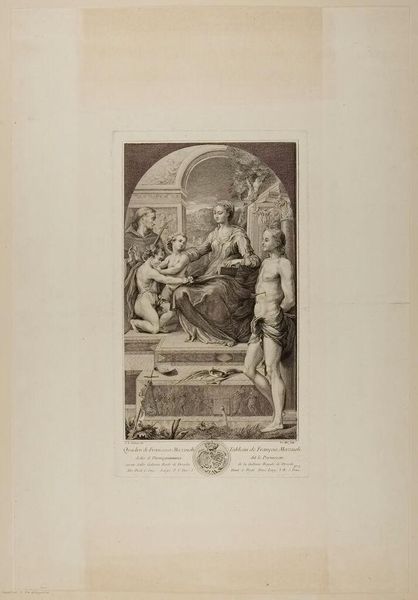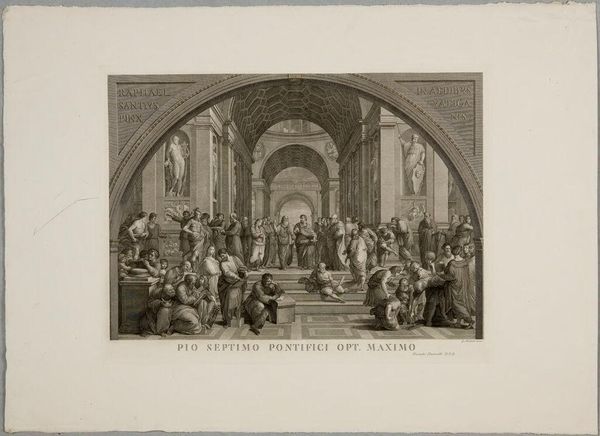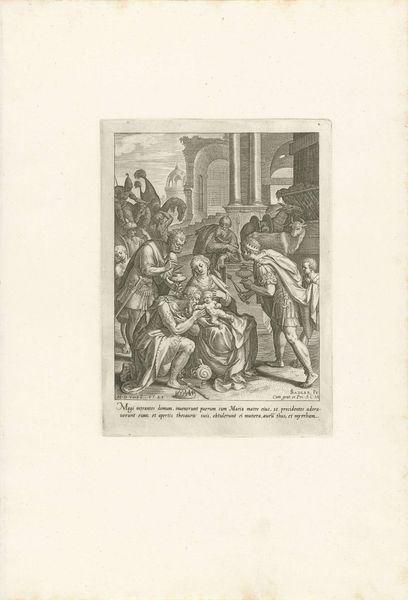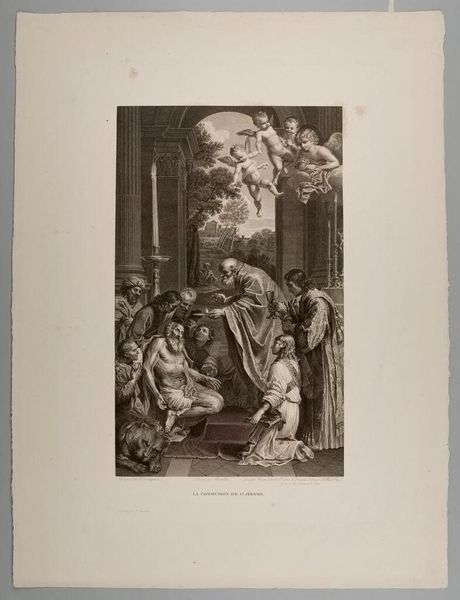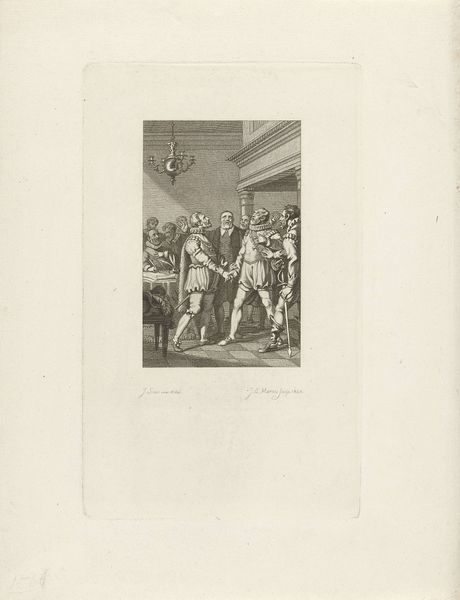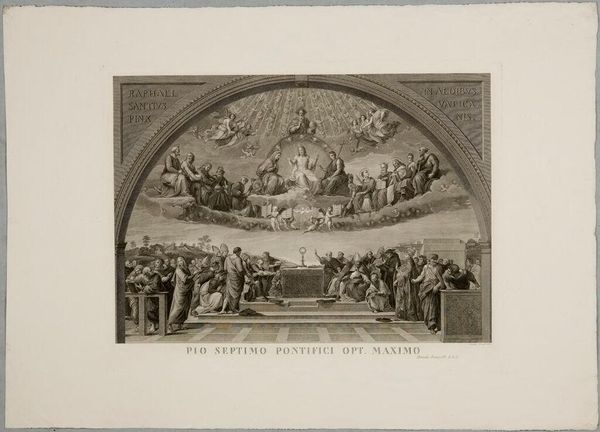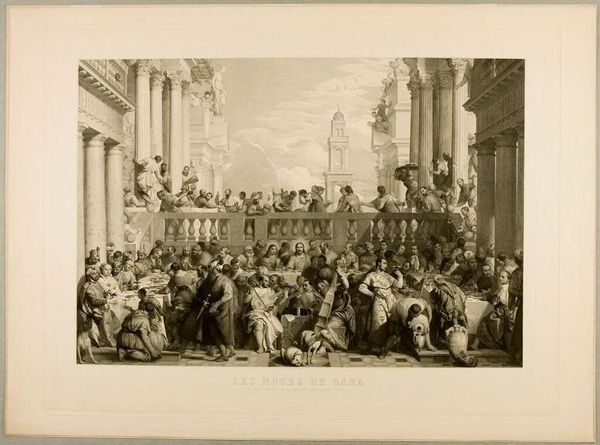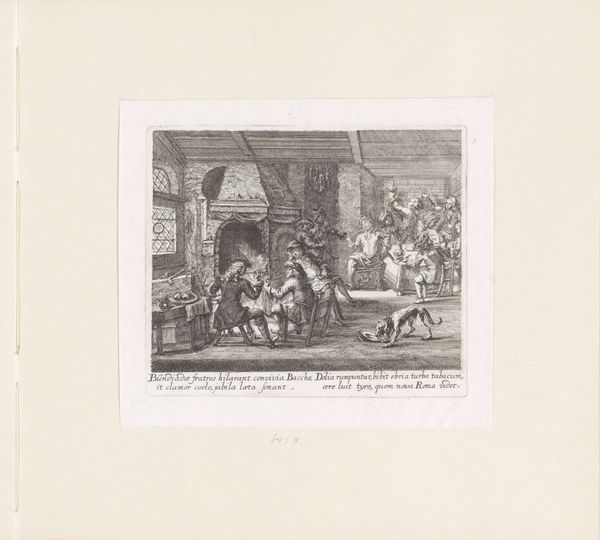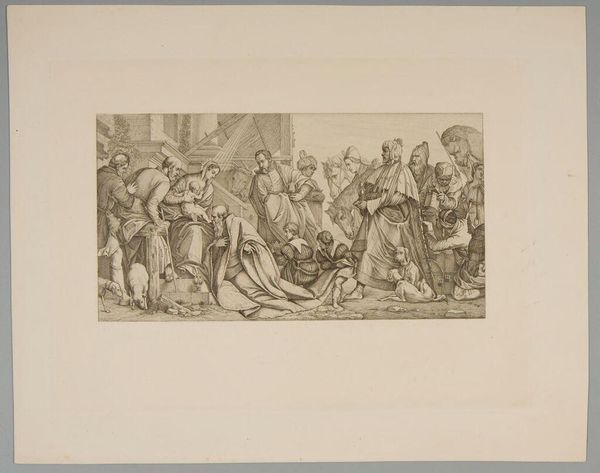
drawing, print, intaglio, paper, ink, engraving
#
drawing
#
narrative-art
# print
#
intaglio
#
classical-realism
#
figuration
#
paper
#
ink
#
history-painting
#
academic-art
#
engraving
#
realism
Dimensions: height mm, width mm
Copyright: Rijks Museum: Open Domain
Editor: Here we have "Kerkinterieur met menigte rond bisschop," or "Church Interior with Crowd around Bishop," an engraving made sometime between 1851 and 1922. It has such a strong sense of depth created by the columns and figures. What catches your eye when you look at it? Curator: The material process is paramount here. The fine lines of the engraving, the way they create tone and shadow, speak volumes about the labour involved. Consider the sheer number of individual marks that had to be etched into the metal plate to achieve this level of detail. The printing press then allows for reproducibility. This changes art’s context to one of distribution and mass consumption. Editor: That's fascinating. I hadn't thought about the printmaking process itself as being so central to the artwork's meaning. How does that relate to the social context? Curator: The image depicts a religious scene, an interior, yes, but more importantly it visualizes power relations and societal structure. What is the significance of showing the Bishop amidst a "menigte," a crowd? Think about the means by which religious and political ideologies were disseminated in this period. Printed images became crucial tools for propaganda, reinforcing established hierarchies. Is this an objective observation or does it romanticize a pre-industrial social structure? Editor: So the print, as a mass-produced object, paradoxically reinforces a hierarchical structure? I see the contradiction. Curator: Precisely. Also, let's consider the paper itself – the wood pulp, the rag content, where might this paper originate from, who processed it, and what were their labour conditions. How does the scale of production impact our reading of the work? These are key materialist questions. Editor: This has made me rethink the image entirely! I am more interested now in the layers of production and how they affect the image’s message. Curator: Indeed! Considering art through its materials and social context reveals the complex relationships between labor, representation, and power.
Comments
No comments
Be the first to comment and join the conversation on the ultimate creative platform.



